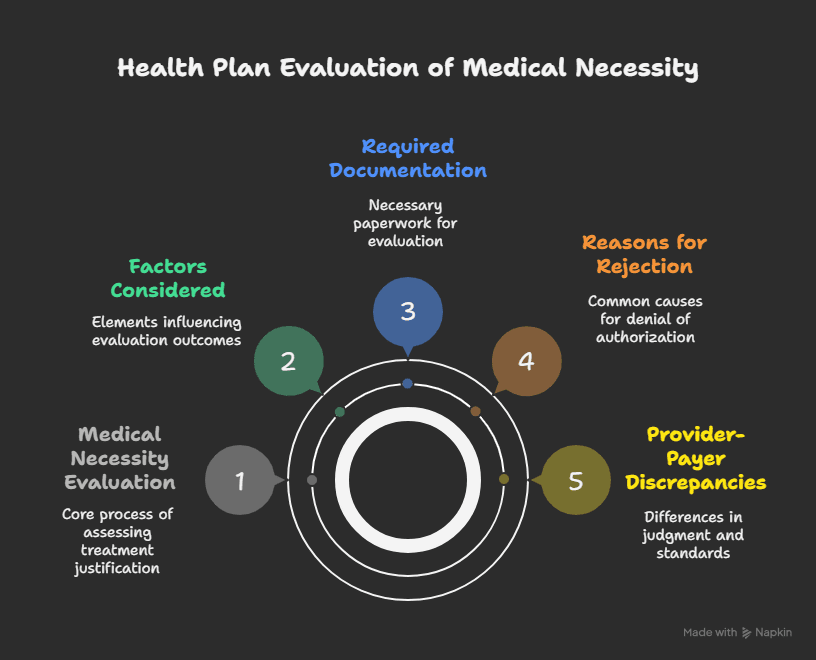On-Demand Outsourcing BPO Services for Healthcare Providers With 24/7 Coverage!
Save up to 70% on staffing costs!
Browse Specialty Staffing ServicesHow does expert PA support fill the revenue gap made by denials?

Prior authorization (PA) remains one of the most pressing administrative hurdles in physical therapy. Designed to manage costs and confirm the medical necessity of specific treatments, medications, and procedures, this process often results in delays that negatively impact both providers and patients. When approvals are denied, it leads to missed treatments, paperwork backlogs, and lost revenue.
A 2023 survey by a leading medical association found that 94% of physicians experienced care delays due to PA, with 1 in 3 reporting that these delays contributed to poor patient outcomes. Physical therapists face similar issues, particularly when insurers question the need for rehabilitation, even when clearly indicated. Most denials stem from documentation gaps, coding inaccuracies, or failure to comply with insurer protocols.
This guide explores common reasons behind PA denials, outlines methods to reduce the risk of rejection, and provides best practices for successful appeals—empowering physical therapists to focus on patient care while minimizing administrative burden.
Understanding Prior Authorization
Prior authorization is a cost-control measure used by health plans to determine if a prescribed service or treatment will be covered. Approval must be obtained before delivering the service to ensure that it meets medical necessity criteria and falls within coverage guidelines.
While PA is meant to curb unnecessary procedures, the process can hinder clinical efficiency, delay care, and create barriers to timely treatment. For physical therapy clinics, it also directly impacts appointment scheduling and overall workflow.
How Health Plans Evaluate Medical Necessity?
To determine medical necessity, payers assess PA submissions against internal guidelines, clinical standards, and benefit limitations. The evaluation typically requires:
-
A detailed diagnosis and patient history
-
Evidence of prior treatment attempts and outcomes
-
Alignment with clinical pathways or step therapy protocols
Discrepancies between the clinical judgment of the provider and the payer’s internal benchmarks often lead to rejections. For example, if a patient’s treatment plan does not follow conservative therapy progression (e.g., rest or over-the-counter therapies before advanced modalities), it may be denied—even if clinically appropriate.

Services That Commonly Require Prior Authorization
Although each insurer has unique criteria, some services are more frequently subject to PA review:
-
Prescription Medications: Especially high-cost or specialty drugs
-
Surgical Procedures: Joint repairs, elective surgeries, spine interventions
-
Diagnostic Imaging: MRI, CT scans, and other advanced imaging tests
-
Physical Therapy: When exceeding a preset number of sessions or requiring extension beyond typical recovery benchmarks
-
Medical Equipment: Items such as mobility aids, orthotics, and prosthetic devices
Keeping up with these evolving requirements and submitting requests with thorough documentation reduces the risk of delays.
Why Prior Authorization Requests Get Denied?
Understanding the common pitfalls that result in denial helps prevent unnecessary back-and-forth with payers. Key reasons include:
1. Lack of Medical Necessity Justification
Requests may be rejected when documentation doesn’t sufficiently show why the service is needed. Payers often look for failed previous treatments and functional metrics showing the therapy’s impact. If a patient’s progress is not clearly documented, approvals for additional sessions may be denied.
2. Out-of-Network Services
If care is scheduled with providers outside a plan’s network, PA may be automatically denied. Always confirm network status before submitting the request to ensure coverage.
3. Errors in Coding and Billing
Incorrect or outdated use of ICD-10, CPT, or HCPCS codes can trigger automatic denials. These include mismatched codes, missing modifiers, or procedural descriptions that do not align with the patient’s diagnosis.
4. Coverage Limitations
Many plans restrict the number of physical therapy visits or place quantity limits on certain services. When those thresholds are crossed, justification must be exceptionally strong to avoid rejection.
By anticipating these risks, providers can refine their documentation and pre-check insurer rules, ensuring requests meet all requirements.
Appealing a Prior Authorization Denial
Even when all documentation appears accurate, denials can occur. Fortunately, the appeals process gives providers a structured opportunity to challenge unfavorable determinations.
1. Analyze the Denial Notification
Review the explanation of benefits or denial letter to understand why the request was declined. This may reveal missing records, incorrect codes, or unmet clinical criteria.
2. Compile Strong Supporting Evidence
Successful appeals often hinge on:
-
Detailed patient progress notes and assessments
-
Proof of prior failed therapies
-
Peer-reviewed literature supporting the proposed treatment
-
Provider letters explaining medical urgency
Therapists should emphasize the functional impact on the patient and how delays could compromise recovery.
3. File an Internal Appeal
Most insurers allow internal appeals within 30–60 days. Use the correct forms and be sure to:
-
Include all medical documentation
-
Match language and criteria used by the insurer
-
Submit a letter of medical necessity
4. Request an External Review
If an internal appeal is denied, patients and providers may escalate to a third-party or government agency, especially if the situation involves a serious health risk or the treatment is legally mandated under state or federal law.
5. Follow Best Practices in Appeals
Maintaining clear records, meeting deadlines, using accurate terminology, and involving advocacy when needed can significantly increase success rates.
How to Reduce the Risk of Prior Authorization Denials?
Preventing denials before they happen is the most effective way to protect revenue and ensure timely care. Providers can take the following steps:
1. Improve Documentation Quality
Include:
-
Detailed clinical findings
-
Progress notes
-
Justification for additional sessions
-
Accurate forms and required attachments
2. Confirm PA Requirements in Advance
Before initiating treatment, verify:
-
Whether authorization is needed
-
Step therapy prerequisites
-
Benefit limitations and exclusions
-
Covered alternatives or formulary options
3. Stay Current on Coding Standards
Regular audits and training on code changes and modifier usage help prevent denials caused by technical errors.
4. Communicate Regularly with Payers
Reach out to payer representatives for complex or unusual cases. Consider requesting peer-to-peer reviews to clarify treatment needs.
5. Adopt Electronic Prior Authorization (ePA) Tools
Digital PA systems reduce submission errors, speed up approval timelines, and ensure requests comply with the latest payer policies in real time.
6. Monitor Denial Trends
Track reasons for denials by payer and service type. Use this data to revise submission protocols and train staff on common pitfalls.
7. Involve Patients in the Process
Educate patients about coverage limits, PA requirements, and what to expect if a denial occurs. Encourage them to contact their insurer for clarity or advocacy.
What Did We Learn?
Physical therapists play a critical role in managing prior authorization workflows. Timely documentation, payer compliance, and strategic appeals reduce delays, protect revenue, and ensure patients receive needed care without interruption.
By integrating technology and refining internal processes, clinics can save time, reduce administrative burdens, and improve overall approval rates while staying focused on delivering quality rehabilitation services.
What People Are Asking?
1. What is prior authorization?
Prior authorization is a process where insurers review and approve specific treatments before they’re provided to confirm medical necessity.
2. Why is prior authorization needed?
It helps insurers control costs and ensure that the requested care aligns with clinical guidelines.
3. How does prior authorization affect physical therapy?
It can delay sessions, increase paperwork, and reduce patient access if not handled properly.
4. What are the most common services that require prior authorization?
High-cost medications, surgeries, imaging tests, physical therapy sessions, and medical equipment.
5. Why do prior authorization requests get denied?
They’re often denied due to missing documentation, incorrect coding, or not meeting insurer criteria.
Disclaimer
For informational purposes only; not applicable to specific situations.
For tailored support and professional services,
Please contact Staffingly, Inc. at (800) 489-5877
Email : support@staffingly.com.
About This Blog : This Blog is brought to you by Staffingly, Inc., a trusted name in healthcare outsourcing. The team of skilled healthcare specialists and content creators is dedicated to improving the quality and efficiency of healthcare services. The team passionate about sharing knowledge through insightful articles, blogs, and other educational resources.
 Book a Demo to Build Your Team Today!
Book a Demo to Build Your Team Today!

 Read Case Studies
Read Case Studies 



 Virtual Medical Assistants
Virtual Medical Assistants



